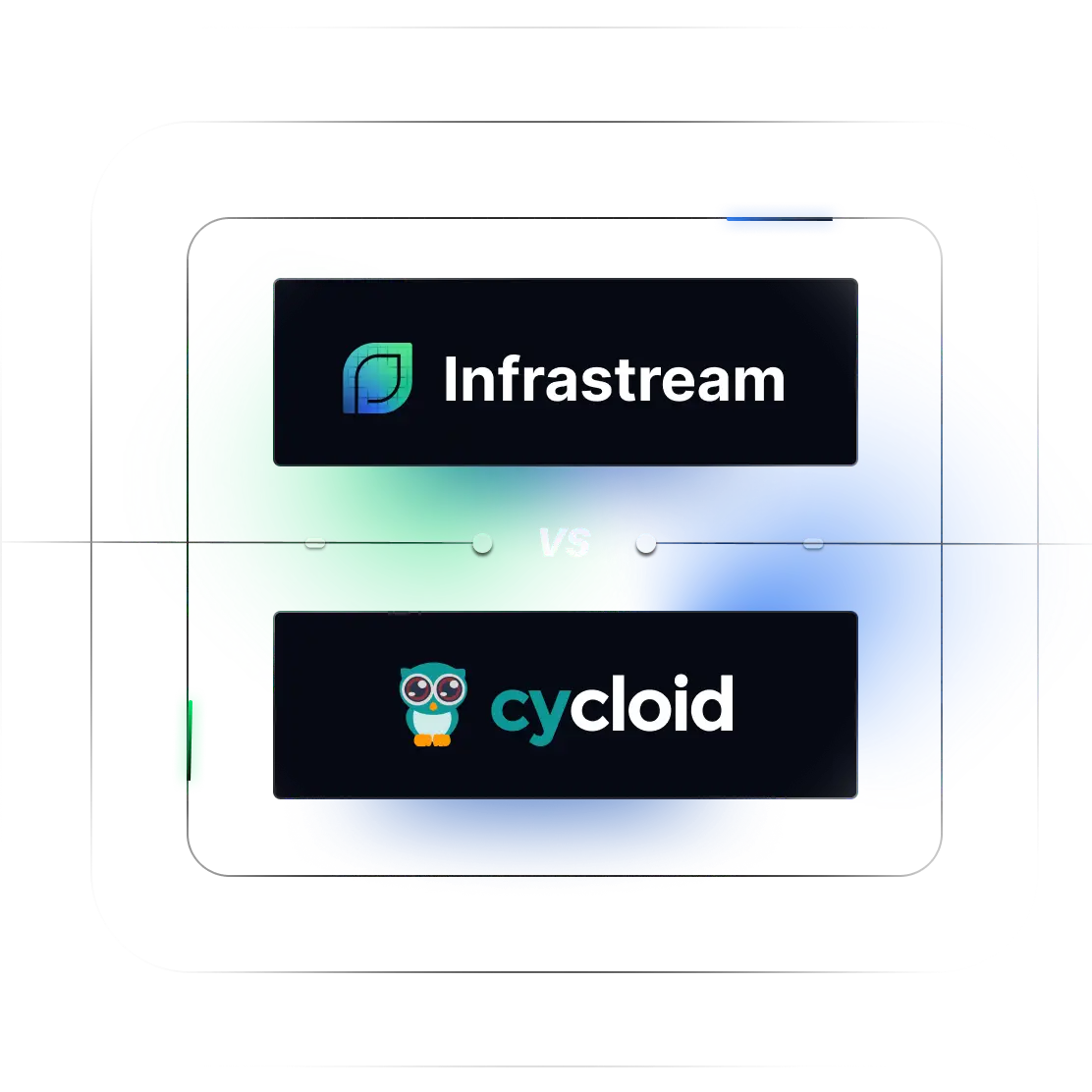
Infrastream vs Cycloid: Why Security-Native Platform Engineering Matters
Infrastream’s edge over
Security Philosophy:
Configured vs. Enforced
Cycloid allows teams to build secure pipelines by integrating tools like Terraform, Ansible, and scanners — but success depends on user-defined orchestration.
Infrastream enforces a Zero Trust security model as a platform default — mandatory, opinionated, and non-negotiable.


Execution Model:
Static Credentials vs Ephemeral Executors
Cycloid uses long-lived credentials like service accounts to execute tasks — secure if managed carefully.
Infrastream replaces static credentials with Executors — identity-based, ephemeral, and scoped to a single task with auto-expiry.
Runtime Security:
Optional Add-ons vs Built-in Defense
Cycloid can deploy security tools (e.g., Falco, mTLS) — but teams must define and enforce runtime controls themselves.
Infrastream mandates mTLS, strict network policies, Falco/eBPF, and threat detection — automatically enforced for every environment.


Policy & Exceptions:
Loose Checks vs Structured Governance
Cycloid allows infrastructure checks and compliance rules.
Infrastream adds a formal Exception Mechanism — all deviations from security policy go through logged, auditable, approval-based workflows.
Multi-Cloud vs. GCP-Native Depth
Cycloid supports orchestration across AWS, GCP, Azure — ideal for broad, heterogeneous environments.
Infrastream goes deep on GCP-native integration — automating IAP, Service Mesh, VPCs, Secrets, and load balancing with policy.






Via SCM
Via Integration
Via integration
Via Cloud/Tool Int.
Via Integration (e.g. Istio)
Ready to Redefine Your Infrastructure?




